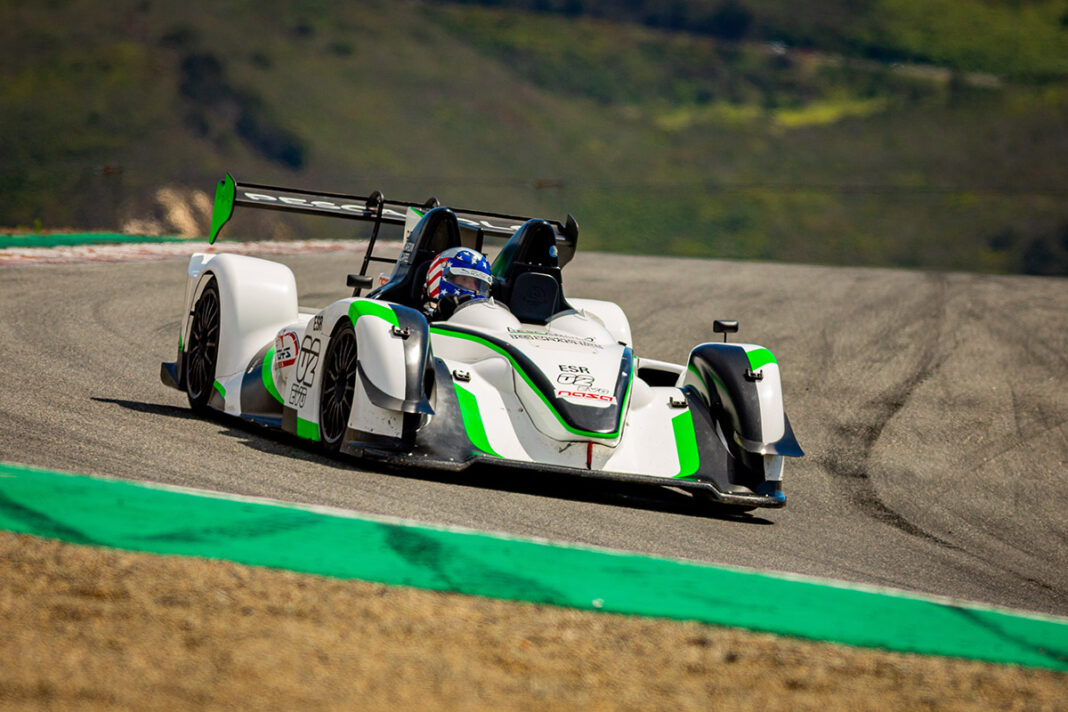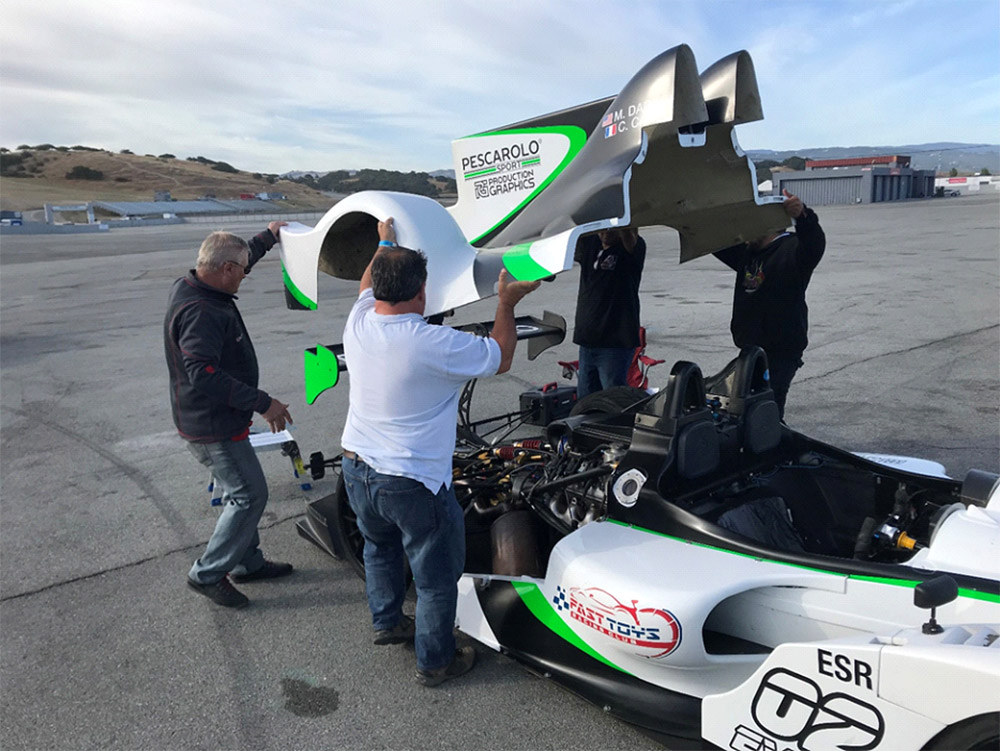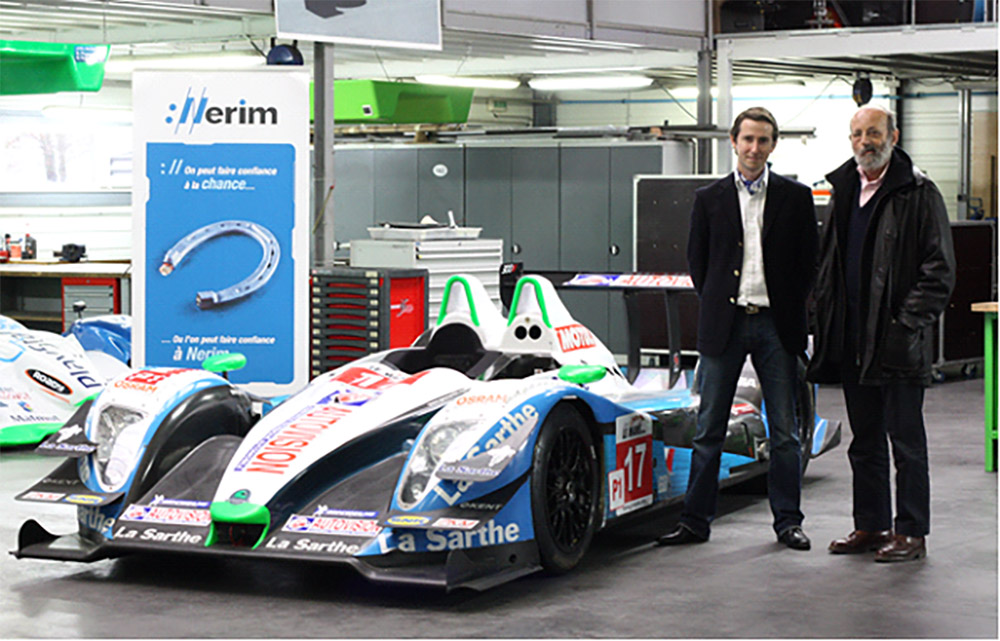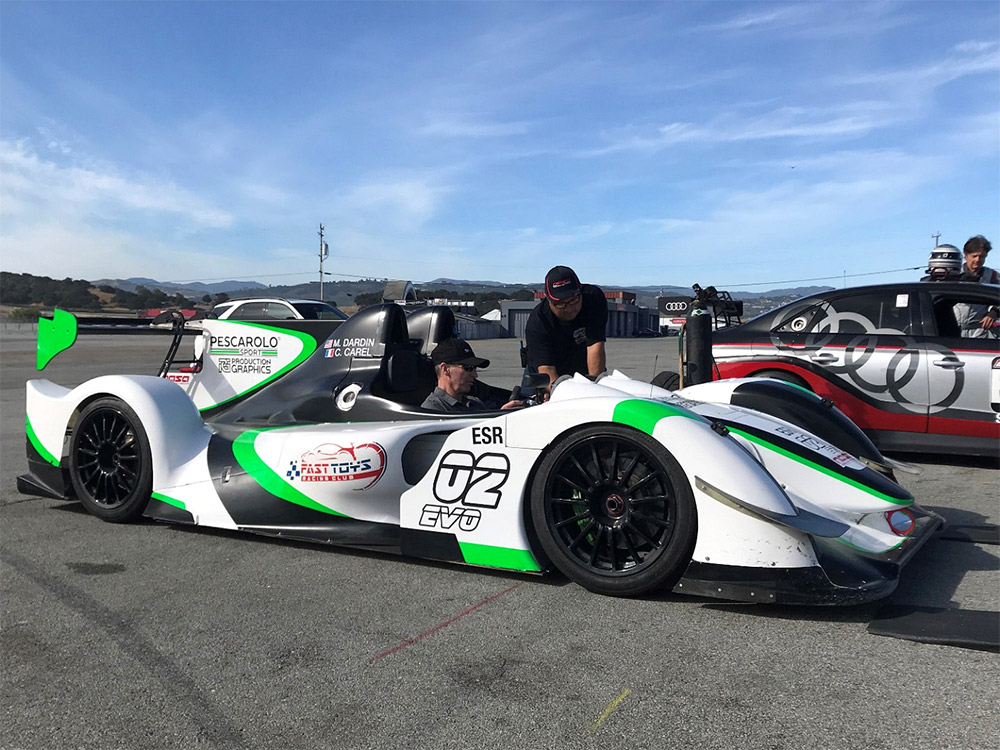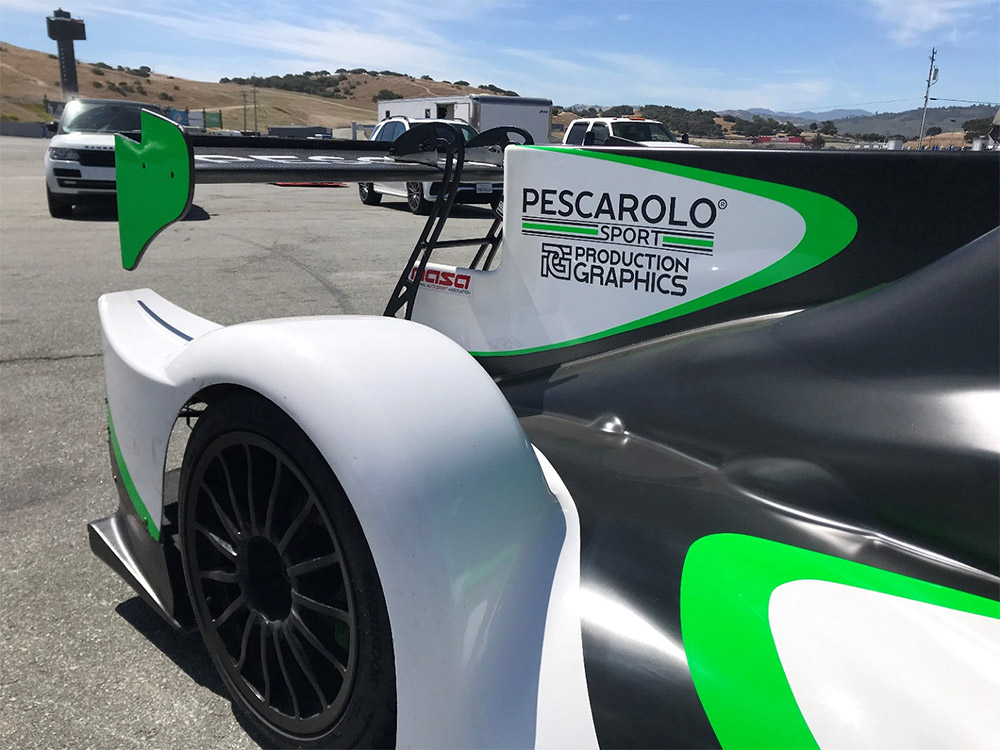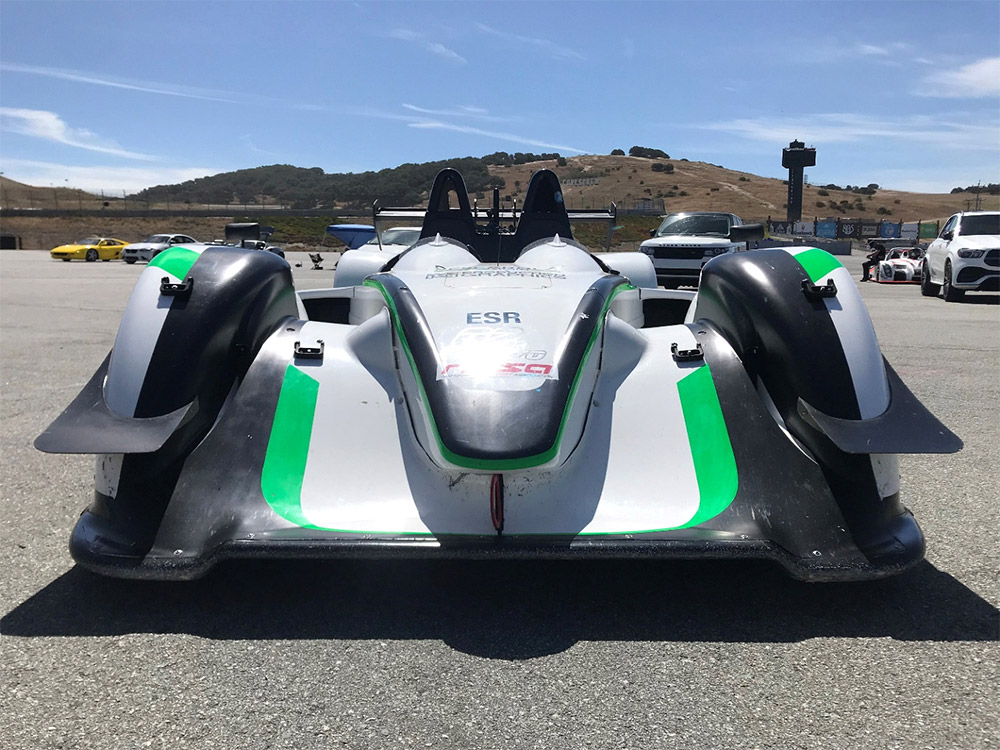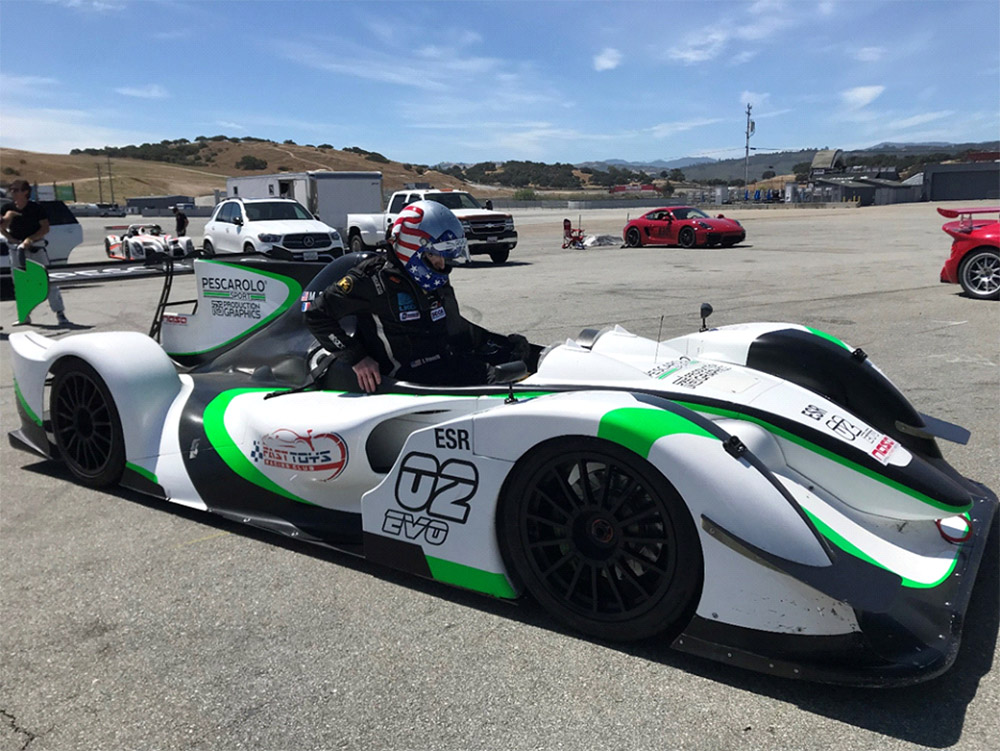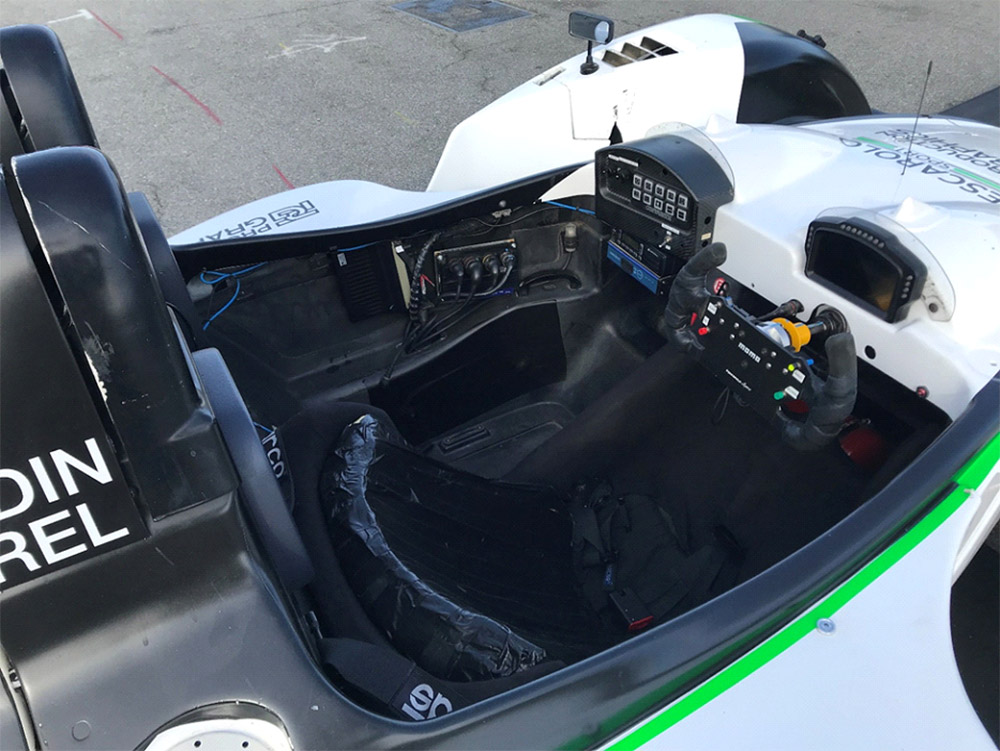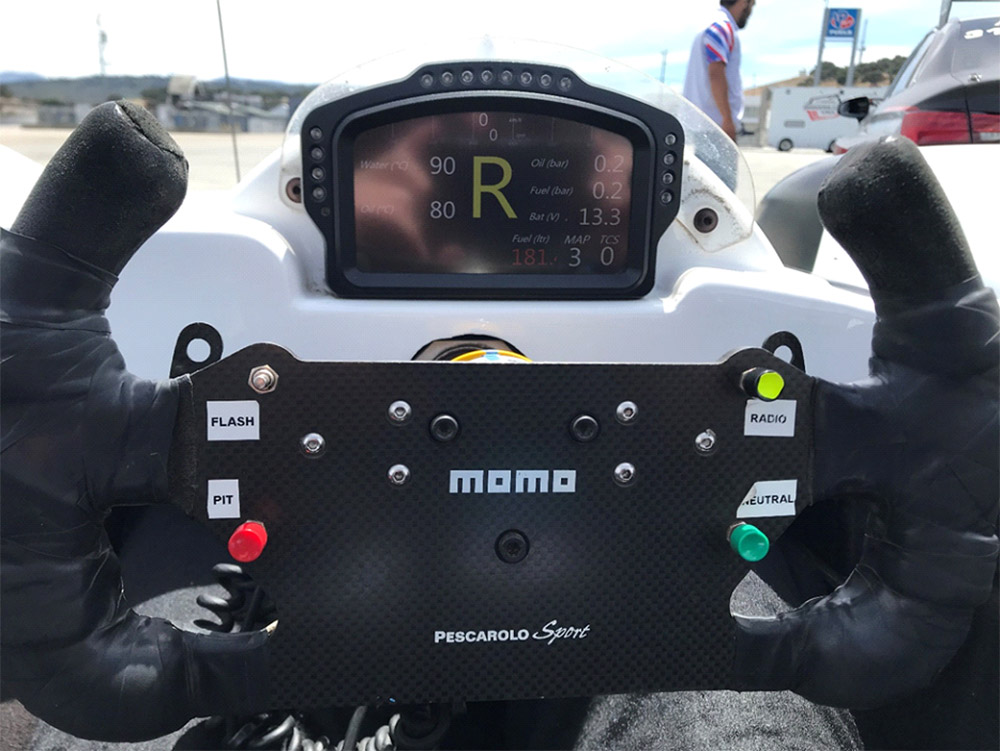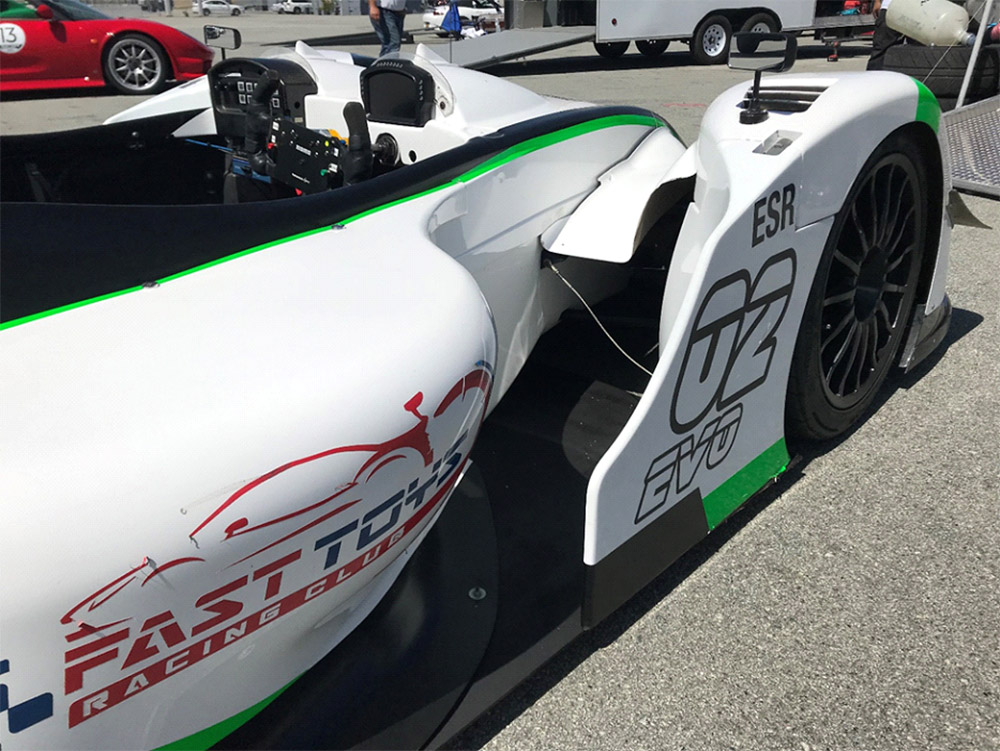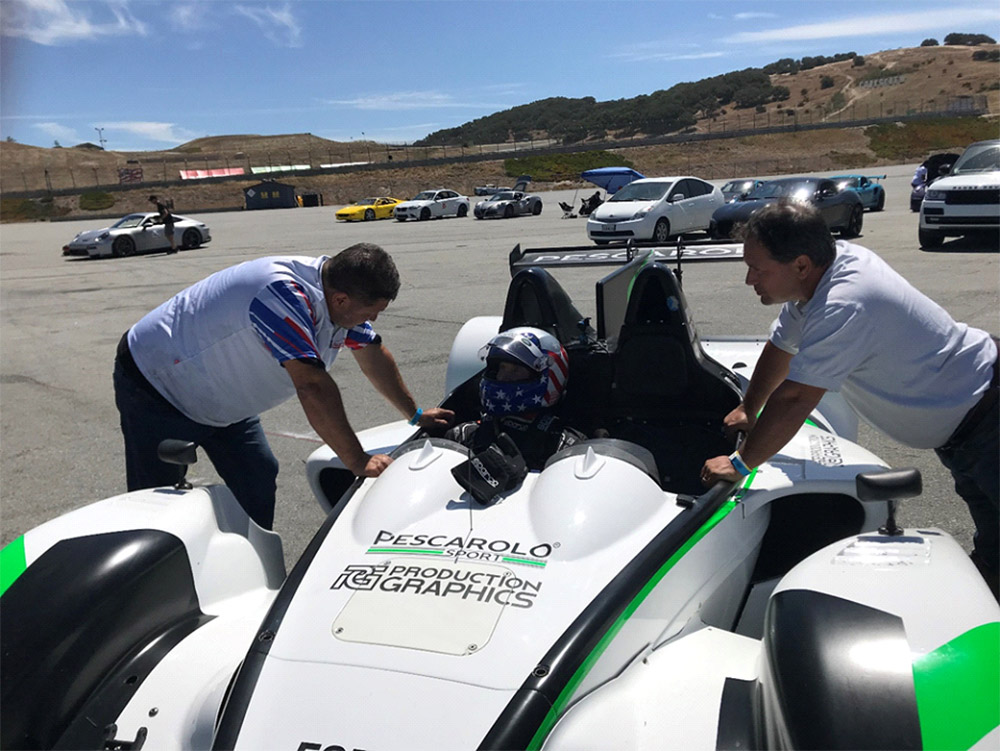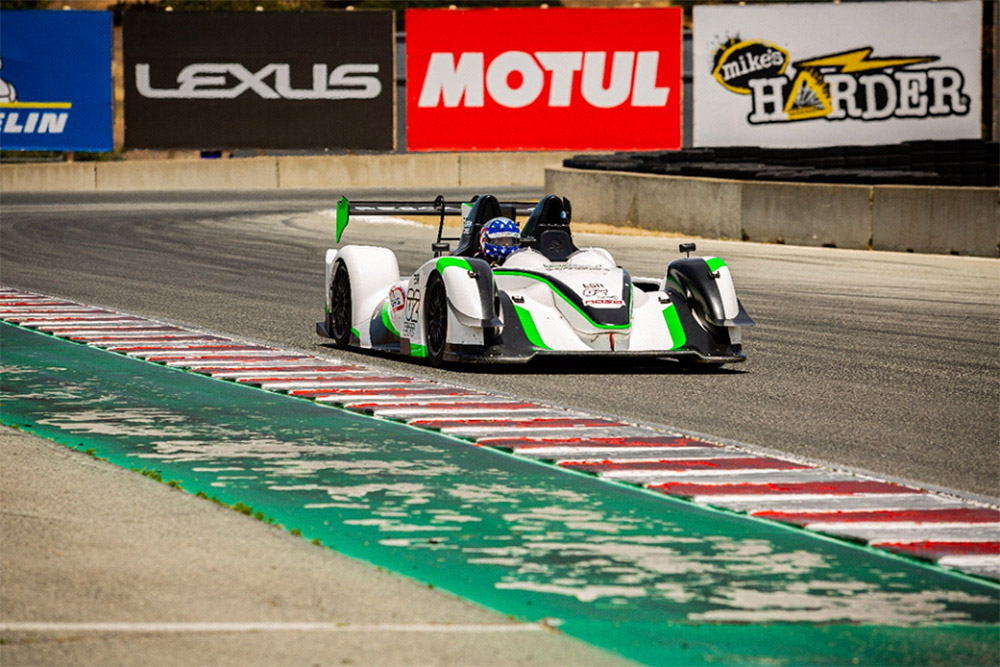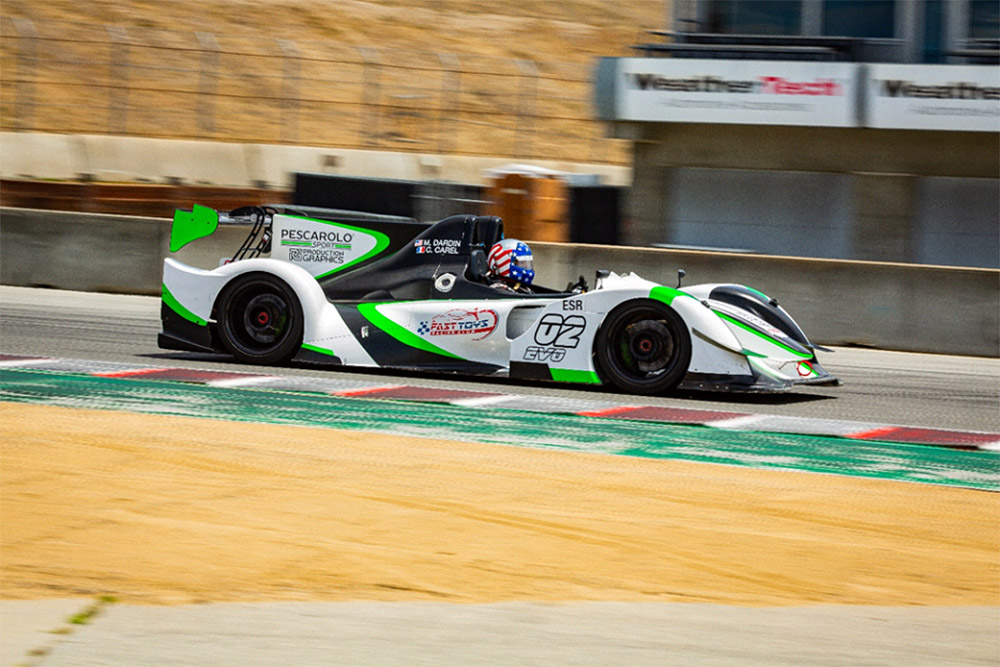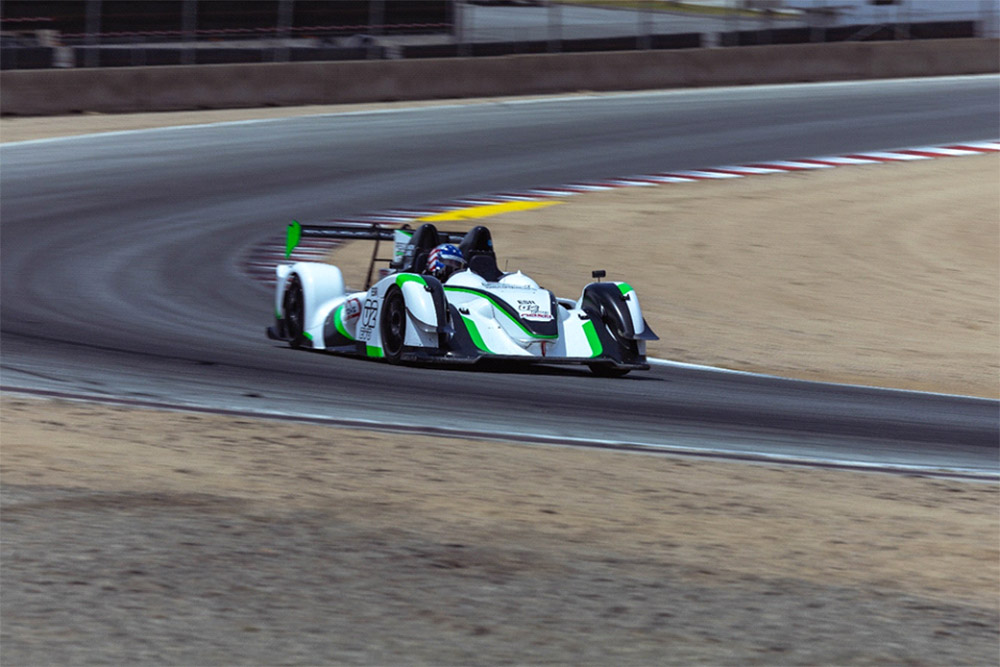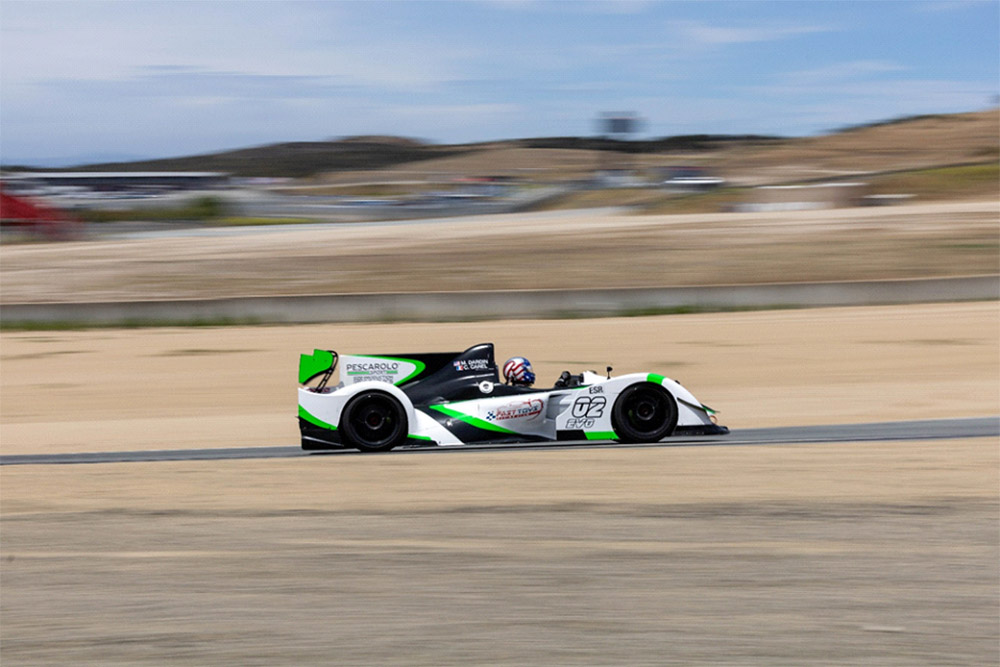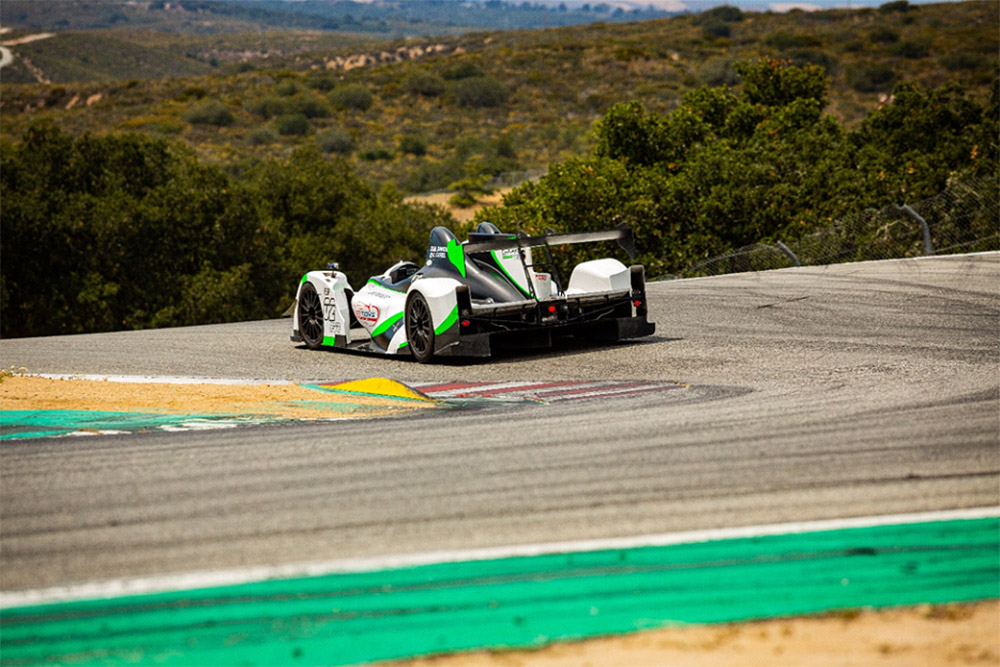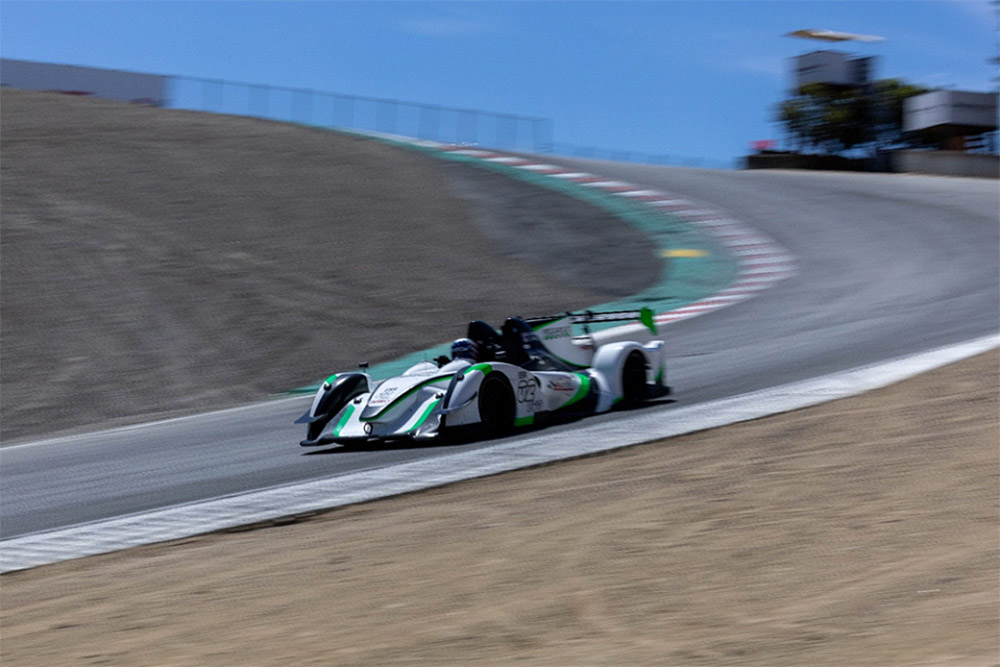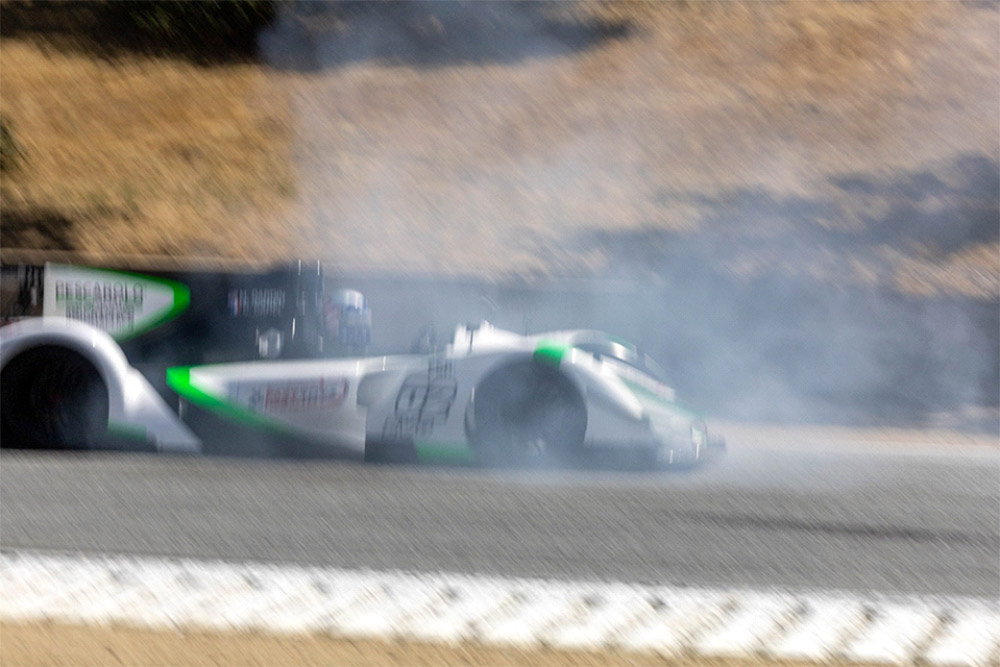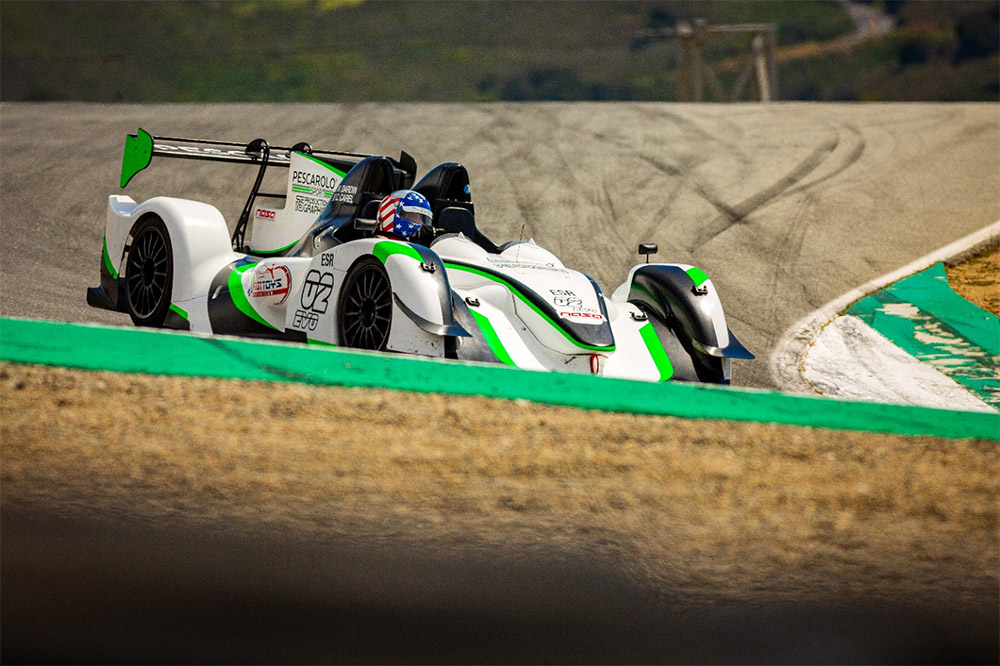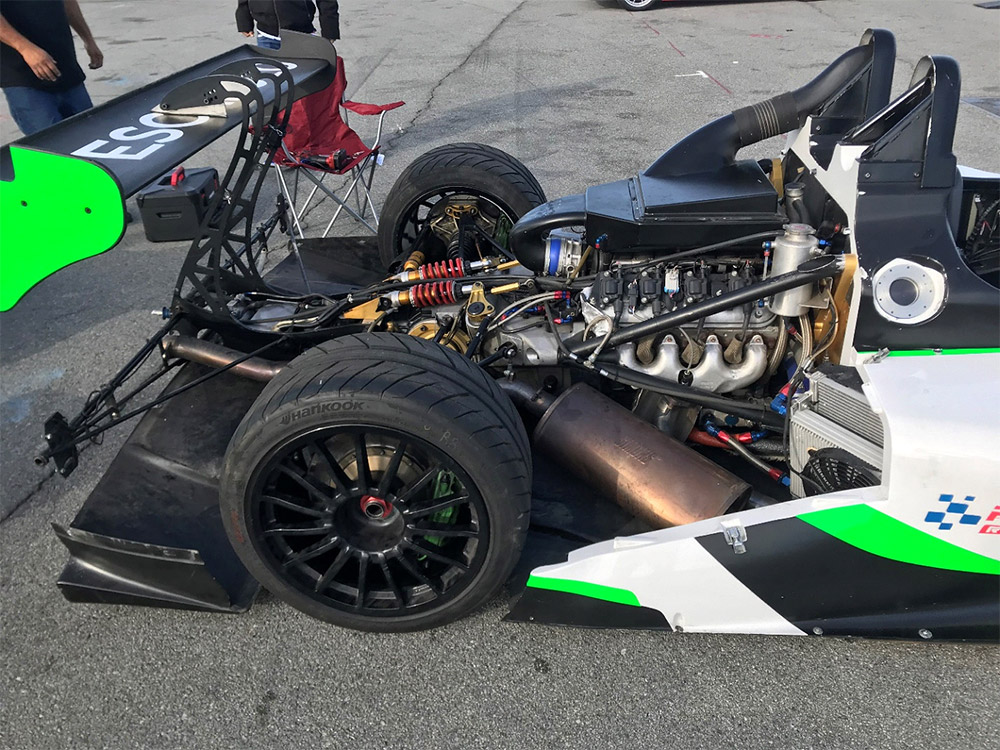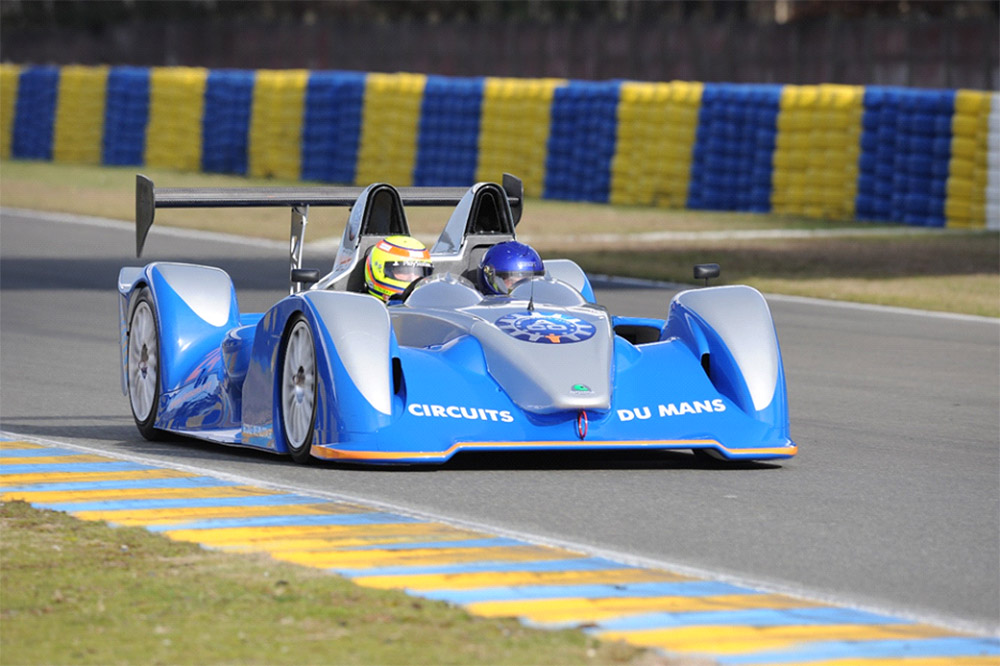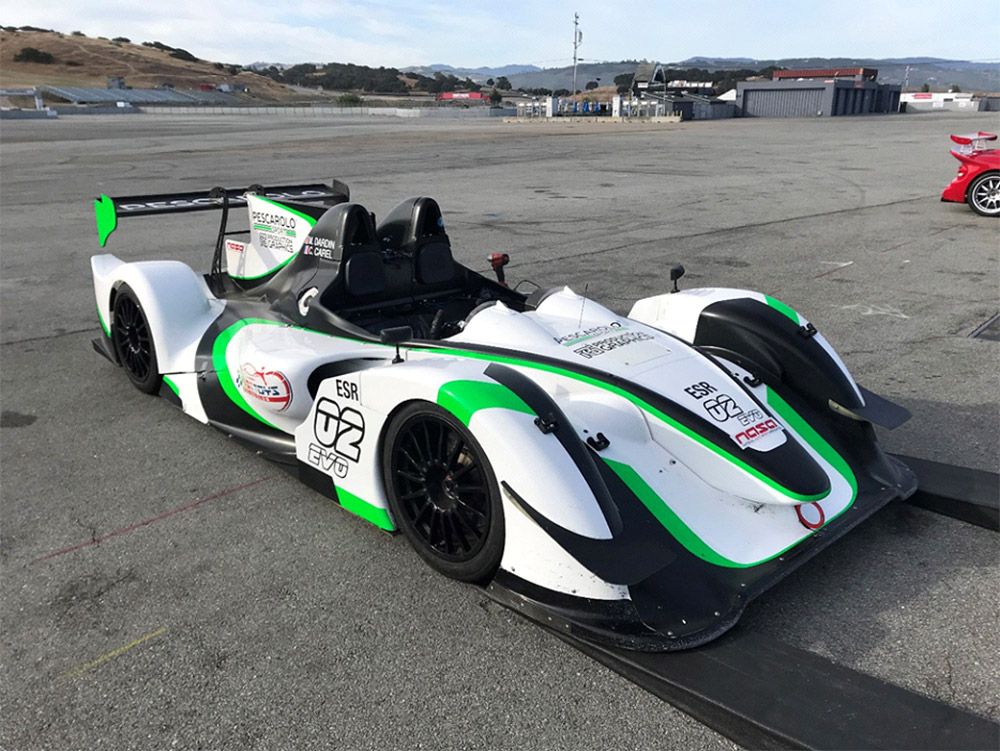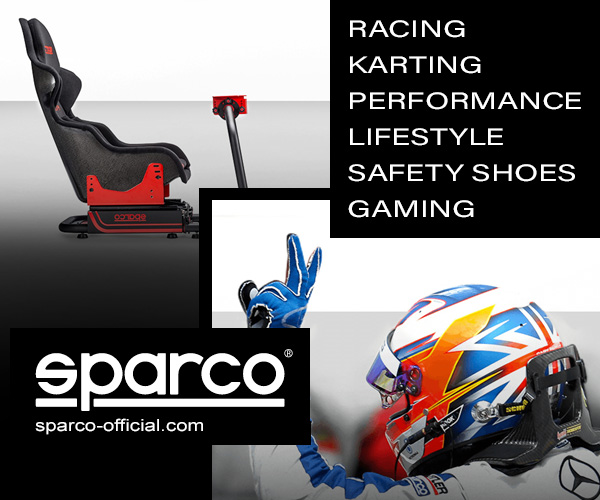Prototype race cars live in a category of their own. They are purpose-built land missiles. Budgets and racing regulations are the only limitations. They are not designed for comfort or cargo space. Aside from four wheels, they bear little resemblance to any road car sold from a showroom. Their hunting ground is the race track. They are a significant step beyond road-based race cars.
Prototypes are low production machines. Most run only in top-tier sportscar racing by factory teams or strong customer teams. Drivers are typically the most experienced professionals or highly skilled amateurs. Manufacturers aren’t commonly known but racers know names like Ligier, Oreca, Dallara and Pescarolo.
The Pescarolo name is a fixture in the sportscar world. If the 24 Hours of LeMans had a mascot, it would be Henri Pescarolo. The Frenchman has run Le Mans 33 times – more than any other driver. He won overall three times in succession in 1972, 1973 and 1974 with the French factory Matra team. He won in class in 1976 before returning to the top step of the podium in 1984 with Team Joest and the Porsche 956.
Pescarolo’s driving record would have been enough to cement his connection with LeMans, but he ran his own sportscar team after retiring as a driver. Initially, he raced Courage cars before building cars of his own. Pescarolo cars were underdog fan favorites, running in the top class at LeMans against the mighty factory teams of Audi and Peugeot.
The Speed Journal dispatched principal Jeff Francis for an opportunity to wrestle a Pescarolo prototype at a Fast Toys Club’s Laguna Seca track day. The Pescarolo 02 came courtesy of Fast Toys Club. The open-cockpit chassis was the first one built and used as the development car and sample for prospective customers. The racer was built in 2009 in both open and closed-cockpit formats. The first chassis is one of only a handful produced and a rare sight on American soil. The natural terrain road course was well-suited to a prototype with a combination of fast sweeping turns, elevation changes, heavy braking and a long front straight.
Aerodynamics play a significant role for a prototype. Bodywork sculpted on computers and in wind tunnels steers and manages air that tumbles across the nose toward the rear wing. The sculpture beneath the car is unseen, but manufactures suction to pull the tires into the pavement. With so much emphasis on function, form often plays a secondary role.
Approaching the prototype was a visual treat. At the front, a splitter peeked from below the bodywork and small aerodynamic flicks were mounted where headlights would ordinarily be situated. Two dramatic headrest farings incorporated functional air ducts. A prominent vertical fin sat atop the engine cover along the car’s spine that led to a massive wing stretching across the rear. Below the rear wing, a diffuser showed the black magic of managing differential air pressures above and below the car to generate downforce.
Open cock-pit racers are relatively rare outside the world of single seaters. There is no latticework of rollbars – the driver’s head and shoulders are exposed. With no roof, the brain can focus on the track ahead without the impediments of an A-pillar or even a windshield. The right-hand drive layout required a modest recalibration of sight lines – easier to track closely to the apex in right hand turns and more of a challenge to precisely place the left front tire through left hand turns.
One does not merely get into a prototype race car. Instead, one puts it on like clothing. A prototype wraps around the driver with the ultimate goal of integrating driver and car. The driver steps over the bodywork with one foot, followed with the other and then slides downward into the seat. Both feet fit into a small opening below the dash and find their way to the three pedals buried within. The driver’s legs are modestly bent at the knees rather than stretching straight and level.
When strapped in, the driver sat low in the chassis. At best, seat adjustments provide just enough of a spatial view over the steering wheel and instruments but no extra. The positioning kept the shift lights on the instrument display in the line of sight. At worst, an improperly adjusted seat could put the driver too low and compromise sight lines. It is just another small detail that comes along with running a prototype race car.
A dash with buttons and knobs faced the imaginary passenger to the driver’s left. Aside from the master switch, ignition and start buttons, all were less important than the information display behind the MOMO racing wheel. Key data included temperatures, gear indicator, fuel level, and tachometer. Paddles behind the wheel changed gears. A green button on the wheel accessed reverse with a pull of the left paddle or neutral with a pull of the right paddle.
Visibility behind was a best guess without a rear-view mirror or camera. Two tiny mirrors on the left and right gave a vague sense, but corner worker flags were crucial to keep an eye on approaching faster traffic. Dicing in close quarters in a race would take some keen judgment and instincts.
Patrick Orozco of the Fast Toys crew got Francis settled and gave the all clear. After a flick of the master switch, pushing the ignition button brought the display panel to life and showed a huge N for neutral in the middle. Pushing the start button engaged the starter motor and woke the V-8 engine sitting behind the driver.
Once warmed up, the Pescarolo 02 was ready for the track. A pull of the paddle selected first gear with a solid clunk. The stiff clutch had little pedal travel and was more of an on/off switch than anything gradual. The clutch only operated for stopping and starting, not for transitions through the gears once underway. The three pedals were very close together in the footbox. Francis started with right foot braking. With more time at the controls, left foot braking may have become comfortable. The pedals were naturally positioned and finding the right pedal at the right time was never a problem.
After the slow speed trundle down pit lane, Francis let the Pescarolo 02 off its leash. The acceleration was explosive. The lightweight prototype made use of its 420 horsepower to launch itself out of each corner and run with urgency to the next.
Coming out of the slow final corner at Laguna Seca Raceway, Francis mashed the pedal to the floor for the run down the front straight. The driver’s head snapped back with each shift of the sequential transmission. Bap – bap – bap – bap. Shift lights illuminated as the revs climbed closer to the 7,000 RPM redline. The Pescarolo passed under the bridge in sixth gear in excess of 130 mph. It took a few sessions to summon the bravery to remain flat over and beyond the crest but the Pescarolo was up to the task. A sprint from zero to sixty takes only 2.9 seconds. The top speed is 186 mph. Serious speed.
The wind buffeted and bounced the driver’s helmet at speed, the challenge was in keeping eyeballs level and focused. The word “violent” is overused in driving and motorsports, but is apt. A prototype has an uncompromised mission and expects its pilot to adapt and adjust.
Shedding 90 mph from the front straight sprint, the Pescarolo mastered the deaccelerating dive into the double apex Andretti hairpin. The car carried exceptional speed and required a firm hand to rotate the chassis, bringing it back to the second apex. With no anti-lock braking available, the driver’s feet controlled the braking.
The small race steering wheel required an extensive upper body workout in the absence of power steering. The steering was sensitive and precise and required only minimal input. The turning radius was extremely tight, so the wheel didn’t require a huge twist to point the front tires.
Hard acceleration on exit risked a touch of oversteer but the Pescarolo was composed. It carried its momentum through turns three and four before hitting speeds over 120 miles per hour en route to turn five. The car gloriously popped on downshift and settled nicely under braking. The mechanical feel of the gear changes added to the visceral experience. The thumping Chevrolet V8 leaned on all available torque to make the run up the hill.
The stiff suspension helped keep the car level through the corners, but required caution over the curbing. The car sits very low and the driver sits low in the car. Bouncing across curbing at the apex of turn 6 sent a succession of jolts through the chassis and the driver.
After the rocket ride up the steep grade to the top of the corkscrew, the peril of the descent loomed. Trail braking into the corner suited the car but track knowledge and muscle memory helped chart the quick left and downhill right sequence.
In his second session, Francis got on the gas a touch too aggressively on the downhill and the Pescarolo’s rear end overtook the front. A road-based race car typically signals to the driver that a spin is developing, but a prototype operates with tighter margins. With no warning, Franics had no chance to save the spin. He stomped on the binders, keeping the car on the pavement and preventing a roll backwards into the retaining wall. Tire smoke filled the open cockpit. With the sounds of tortured tires still echoing in his ears, he set to turning around with little turning radius and a binary clutch. In perfect paddock conditions, reverse can be elusive. It proved much more challenging rolling backwards downhill wondering about oncoming traffic. Eventually, the Pescarolo pivoted in the right direction, but the incident served as a valuable lesson. Short shifting from third to fourth at the bottom of the corkscrew was clearly the preferred approach.
The car liked a high line to the right side of the track setting up before diving down to the apex of turn nine. With more laps, Francis learned to follow the car’s lead rather than muscling it where he thought it should be. The turn ten banking was a treat. The prototype stuck better and went faster than intuitively seemed possible due to the aerodynamics at work through the high-speed right hander. With a brief run at full throttle, heavy braking and downshifting led into turn 11. It was interesting to try both second and third gear through turn 11. Second might be necessary in a competition scenario to get a quick burst on the inside of another car, but the corner flowed with less drama in third. Either gear found plenty of torque and the Hankook racing tires at the rear wriggled before making another run down the front straight. Traction control electronics helped avoid wildly spinning the tires.
As Francis learned what the car needed, he was able to work with the car rather than wrestle it around the track. One of the most rewarding aspects of driving was finding the balance through high-speed corners. The Pescarolo accommodated a tap of the brakes to move more weight to the front tires for corner entry. A well-timed move to the accelerator called upon the power of the V8, shifting weight to the rear for increased traction. When done properly, the rear stays planted and balanced. It can be a very rewarding feeling of total efficiency. Deciding how much throttle to maintain through the corner and when to accelerate was the mix of art and science. Avoiding abrupt changes were necessary to walk the line. The V8 torque stood ready to cover a multitude of sins but the right match of traction and weight distribution produced the perfect corner. For those racing in competition, this is where precious fractions of seconds on the stop watch are waiting to be found.
The Pescarolo 02 is a visceral and tactile driving experience. The sound of the V-8 just behind the driver, the continual helmet jostling from the wind and stiff suspension, the effort and results from the direct steering, the sight lines from the low driving position, the mechanical sounds and racetrack smells, and even the unplanned tire smoke – it all combines in an immersive experience. The car is not bashful and telegraphs to the driver what it’s feeling and needs as it circulates around the circuit. It makes no effort to insulate the driver. Road-based manufacture race cars like the Ferrari 488 Challenge, BMW GT4 and McLaren GT4 use their performance credentials to meet drivers where ever they land on the spectrum of skill and experience. In a sense, such cars shield the driver from the mechanical magic beneath the skin, opening paths to quick lap times inaccessible otherwise.
The Pescarolo 02 is not a beginner’s car. It is a pure racer that requires prior racing experience or high performance driving skills. Its single-minded mission leaves little room for compromise. Prototype racers are inherently bespoke, so each is different. The Pescarolo 02 is an ideal introduction to that world. There is a reason that the Pescarolo prototypes have been used at the LeMans driving school. Some drivers will take that knowledge and build into other prototype race cars. For most, however, getting time at the wheel in a driving school or track day provides a glimpse of what full prototype racing at LeMans is like. It provides an experience that can never fully be replicated watching on television or standing trackside.



